Discover 11 hidden attractions, cool sights, and unusual things to do in North Castle (United States). Don't miss out on these must-see attractions: Westchester County Center, White Plains Rural Cemetery, and Percy Grainger Home and Studio. Also, be sure to include White Plains TransCenter in your itinerary.
Below, you can find the list of the most amazing places you should visit in North Castle (New York).
Table of Contents
Westchester County Center
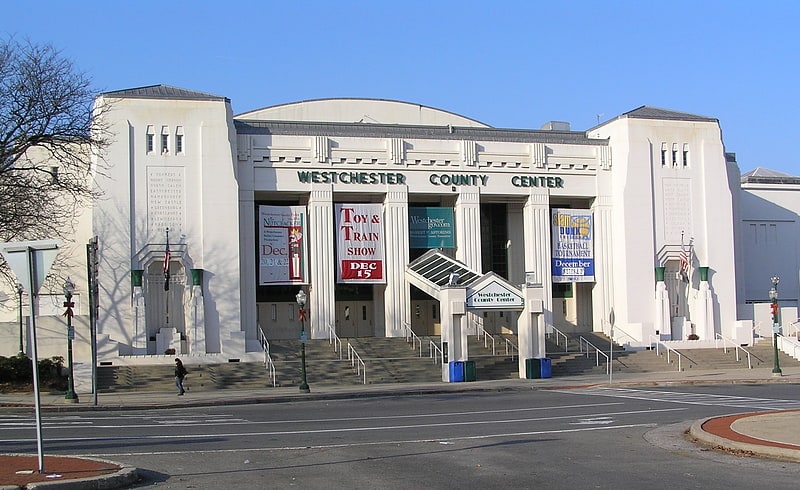
Arena in White Plains, New York. The Westchester County Center is a 5,000-seat multi-purpose arena in White Plains, New York. It hosts various local concerts and sporting events for the area.
The County Center was conceived by the Westchester Recreation Commission in 1924 as a multi-purpose indoor recreational facility to host community programs and income-producing commercial events. It was designed by the architectural firm of Walker & Gillette, and built and decorated in the Art Deco style. The construction project cost approximately $785,000; a $16-million rehabilitation was completed in 1988.
For over 90 years the County Center has been Westchester's premier setting for thousands of concerts, trade shows, sports events, meetings, seminars, theatrical presentations, conventions and civic and community events.
On the weekend of May 22, 1930, the Westchester County Center Grand opening gala was held, attracting thousands from all over Westchester to hear such notable musicians as the pianist Percy Grainger, Metropolitan Opera Company tenor Edward Johnson, organist Palmer Christian and more than 1,500 local choral group performers. In the ensuing years, generations of County Center audiences have been treated to performances by such greats as Judy Garland, Liza Minnelli, Joan Sutherland, James Brown, Kenny Rogers, Janis Joplin and John Sebastian, Jimi Hendrix, The Who along with the Harlem Globetrotters, World Wrestling Entertainment, and the Royal Hanneford Circus, one of the longest running events at the Center to date.[1]
Address: North Castle, 198 Central Avenue
White Plains Rural Cemetery
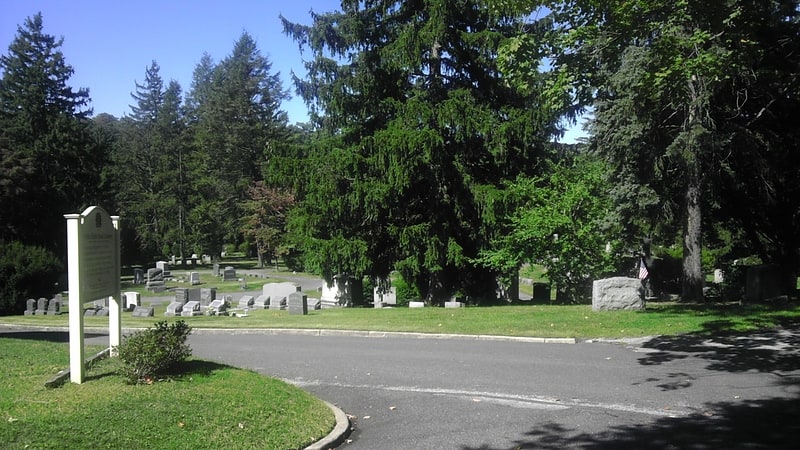
Cemetery in White Plains, New York. White Plains Rural Cemetery is a historic cemetery located in the city of White Plains, Westchester County, New York. The cemetery was organized in 1854 and designed in 1855. It contains miles of narrow, paved roads, none of which is in a straight line. The roads create circular and lozenge-shaped areas for burials. Also on the property is a former church, now cemetery office. It was built in 1797, and is a 2+1⁄2-story, five-by-three-bay frame building with a high-pitched gable roof. It was modified for office use in 1881.
The cemetery was added to the National Register of Historic Places in 2003.[2]
Address: 167 N Broadway, North Castle
Percy Grainger Home and Studio
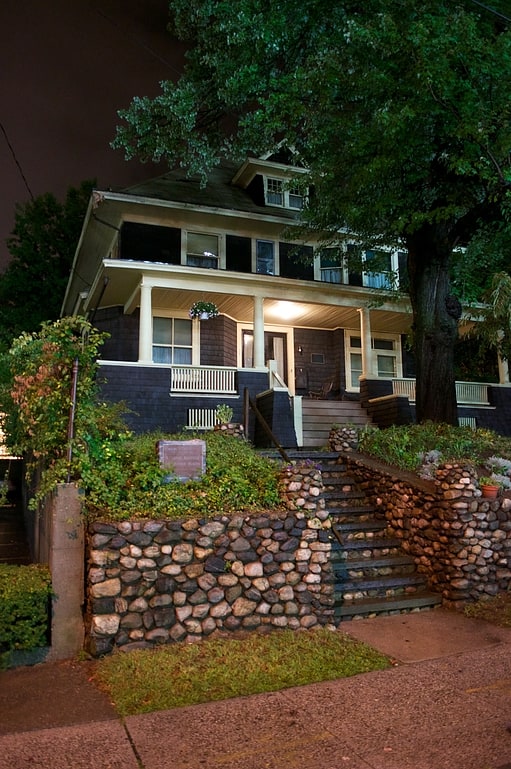
Percy Grainger Home and Studio is a historic home located at White Plains, Westchester County, New York. It was built in 1893 and is a two-story, three-bay-wide dwelling with a pyramidal hipped roof in the American Foursquare style. It features a full-width, one-story porch supported by four Doric order columns. The main entrance is a Dutch door. It was the home of musician Percy Grainger from 1921 to his death in 1961.
It was added to the National Register of Historic Places in 1993.[3]
Address: 7 Cromwell Pl, 10601-5005 White Plains
White Plains TransCenter
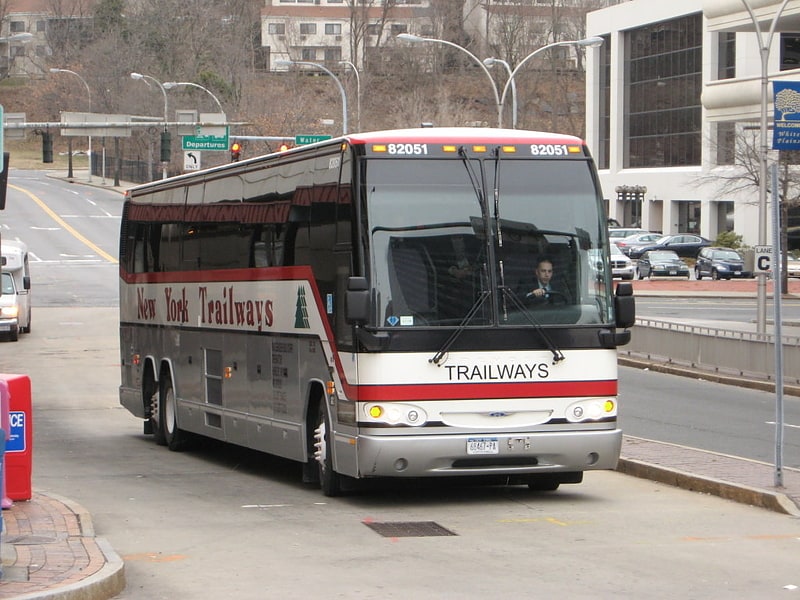
Bus station in White Plains, New York. White Plains TransCenter is an intermodal transit center in White Plains, New York. It serves as a terminal/transfer point for many Bee-Line Buses, as well as intercity buses, and taxicabs. The terminal is located along Ferris Avenue north of Hamilton Street, diagonally across from the White Plains station of Metro-North Railroad, and includes a parking garage located next door to the railroad station, across that street. Ferris Avenue is a one-way street north of Main Street, and is flanked by northbound and southbound buses only lanes between Hamilton Street and Water Street.
The main building of the TransCenter can be found on the block along Ferris Avenue to the west, Water Street to the south, Lexington Avenue to the west, and New Street to the north, which is also covered by the building itself. The parking garage across the street also contains bicycle racks on the northwest corner of Ferris Avenue and New Street, which is also the entrance to the station parking lot north of NY 119.[4]
Address: North Castle, Ferris Avenue & Water Street, White Plains, New York
Jacob Purdy House
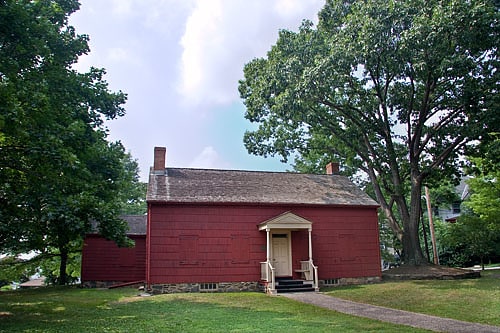
The Jacob Purdy House was used as General George Washington's headquarters in 1778 and possibly in 1776 during the Battle of White Plains in the American Revolutionary War. Originally constructed by Samuel Horton, it was purchased by Jacob Purdy's father, Samuel Purdy in 1730. It came into the possession of Jacob Purdy about 1785, in the aftermath of the war when some of the family had fled as United Empire Loyalists.
In the 1960s it was repaired and restored, and in 1973 the structure was moved to its present location. A further renovation was conducted around 1980, involving both professional craftsmen and local teenagers in an apprentice program. The Jacob Purdy House is now the headquarters of the White Plains Historical Society. The house was listed on the National Register of Historic Places in 1979.[5]
Address: Park Ave, 10603 White Plains
White Plains Armory
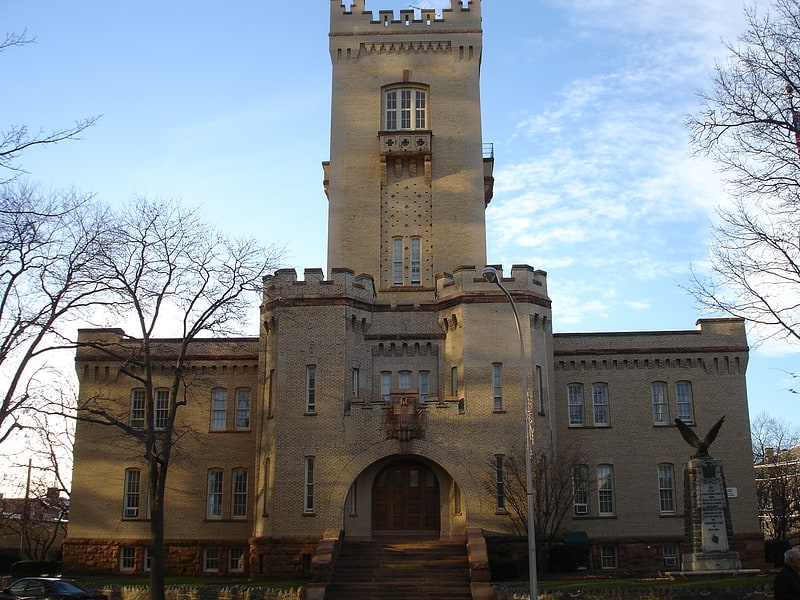
Historical landmark in White Plains, New York. The White Plains Armory is a historic building in White Plains, New York, in Westchester County.
Located at 65 Mitchell Place/35 South Broadway, the building was built to serve as a National Guard armory. Construction of the building began in 1909 and was completed in 1910. The building was designed by architect James E. Ware. The building was 31,612 square feet and takes up three-quarters of an acre. 49th Separate Company/Company L, 10th Infantry Regiment occupied the armory from 1910 to 1939. From April 1924 to November 1929, the White Plains Armory was the temporary headquarters of Troop K of the New York State Police, after a March 3, 1924 fire destroyed the troop's headquarters at Gedney Farms. The police troop left the Armory in November 1929 after a new headquarters in Hawthorne was completed.
Subsequently, the building's tenants were the 106th Infantry Regiment and then the Headquarters and Headquarters Battalion, Company D, 212th Field Artillery.
It is located on the site of the first courthouse where the Declaration of Independence was read on July 11, 1776.
It was added to the National Register of Historic Places in 1980.
The building was vacated in 1977. In 1982, it was converted to Armory Plaza, a senior housing complex with a senior center on first floor.[6]
Mapleton

Building in White Plains. Mapleton, also known as St. Joseph House, is a historic building located at White Plains, Westchester County, New York. It was added to the National Register of Historic Places in 1976.[7]
Bar Building
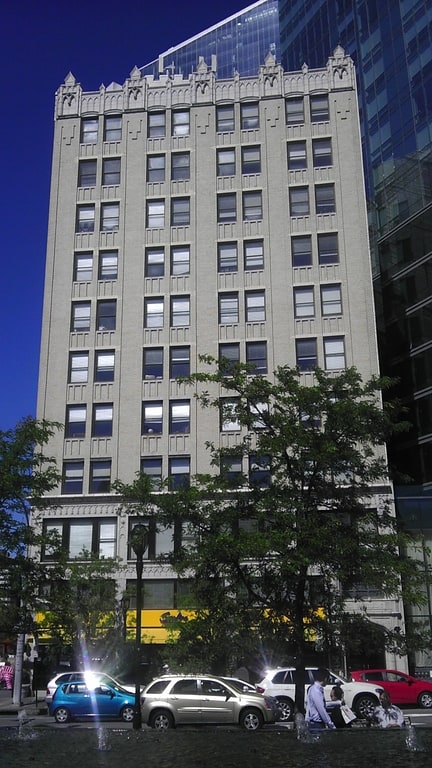
Building in White Plains, New York. The Bar Building is a historic commercial building designed by architect Benjamin Levitan and located at White Plains, Westchester County, New York.[8]
Charles L. Brieant Jr. Federal Building and Courthouse

Building in White Plains, New York. The Hon. Charles L. Brieant Jr. Federal Building and Courthouse is a United States federal office building and courthouse located at 300 Quarropas Street in downtown White Plains, New York, the seat of Westchester County. It is adjacent to the Richard J. Daronco Courthouse in which the New York State Supreme Court and Westchester County Court sit.
The United States District Court for the Southern District of New York hears cases in the courthouse. It is named for Charles L. Brieant Jr. a former federal judge at the White Plains courthouse who also practiced law and was involved in politics in Westchester County.[9]
Peoples National Bank and Trust Company Building

Peoples National Bank and Trust Company Building is a historic bank building located at White Plains, Westchester County, New York. It was built in 1929 and is a nine-story commercial building in the Classical Revival style. It has an L-shaped plan and features highly finished limestone and brick materials and terra cotta ornament at the street level. Above the two-story base, the building remaining stories are built of brick with limestone trim.
It was added to the National Register of Historic Places in 2000.[10]
Good Counsel Complex

Good Counsel Complex, also known as Convent of the Sisters of the Divine Compassion, is a national historic district located at White Plains, Westchester County, New York. The district consists of 10 contributing buildings, including the separately listed Mapleton. In addition to Mapleton, contributing buildings in the complex includes the convent, chapel, House of Nazareth, cooking school / infirmary, heating plant / workshop, Tilford House, St. Ann's Cottage, and carriage house / stable. The buildings include regionally significant examples of Romanesque Revival and Mediterranean Revival inspired architecture. The buildings house the Academy of Our Lady of Good Counsel.
It was added to the National Register of Historic Places in 1997.[11]